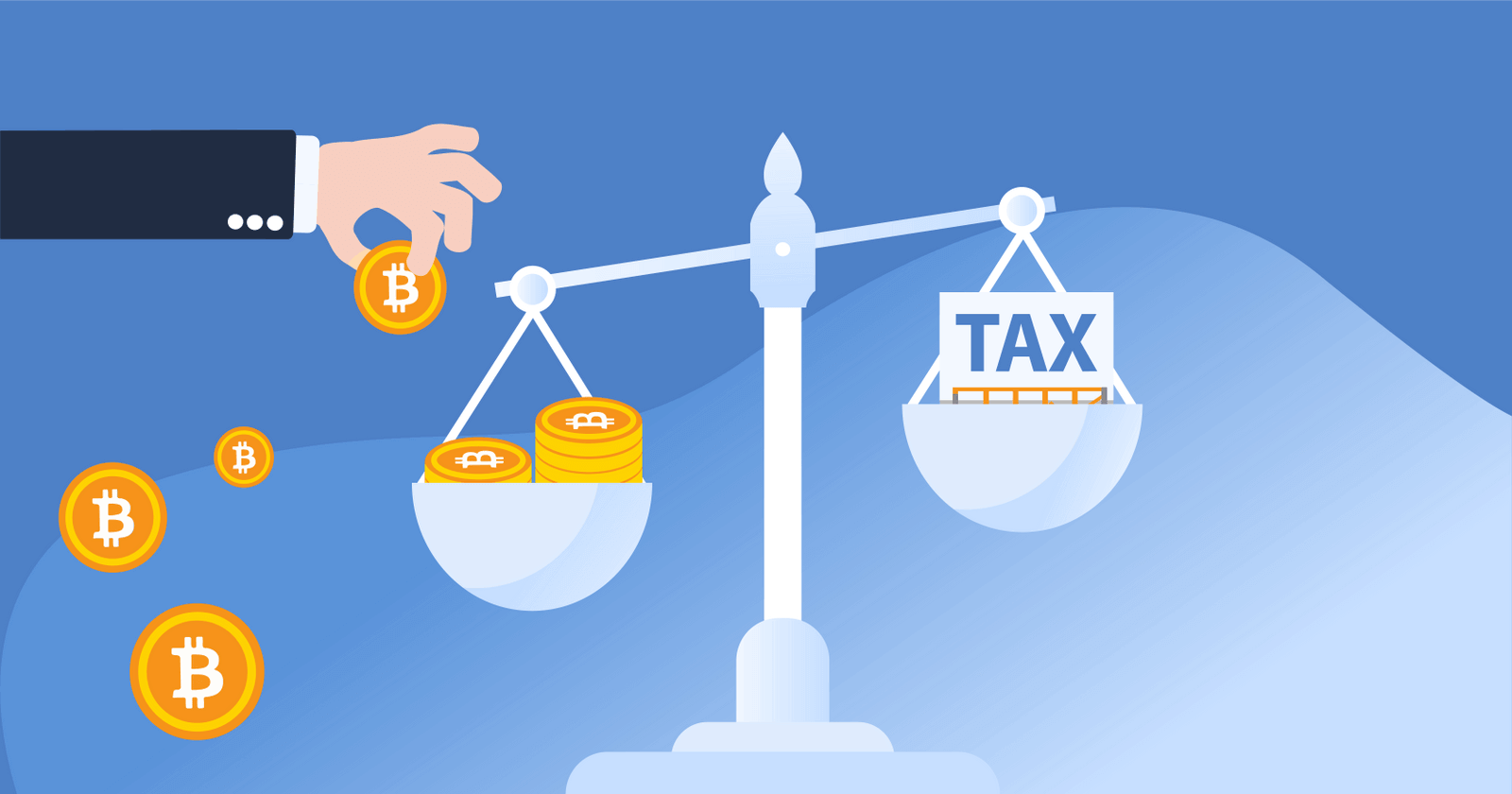

Looking to invest in cryptocurrency for the long-term? Let’s walk through some of the most popular options for investment in 2025.
Disclaimer: This article does not constitute investment advice. Please consult a wealth advisor before making an investment decision.
What are the best long-term cryptocurrencies?
Let’s walk through some of the most popular cryptocurrencies to invest in for the long-term. Remember, the section below does not constitute investment advice. You should do your own research before buying and/or selling any coin!

Bitcoin
Originally launched in 2009, Bitcoin is the world’s oldest and most well-known cryptocurrency! Bitcoin is often called ‘digital gold' and is considered a hedge against inflation. As of 2025, Bitcoin has a market capitalization worth more than $1 trillion.
Fixed supply: There will never be more than 21 million Bitcoin. As a result, many investors see BTC as ‘digital gold’ — an asset that derives value from scarcity!
Trusted cryptocurrency: Originally released in 2009, Bitcoin is the world’s biggest cryptocurrency. The cryptocurrency has an established global community and a track record of success.
Inflation hedge: Because Bitcoin has a limited supply, many investors see it as a hedge against inflation of the U.S. dollar and other fiat currencies.
Strategic reserve: BTC will be one of the cryptocurrencies in the US government’s strategic crypto reserve.
Cons
Limited dApps: Unlike other blockchains, Bitcoin was not built to support decentralized applications and NFTs.

Ethereum
Originally launched in 2014, Ethereum is the world’s biggest blockchain for NFTs and DeFi protocols! As of 2025, Ethereum has a market capitalization over $200 billion!
Decentralized apps: Ethereum is the biggest blockchain for decentralized applications and NFTs! Many investors see buying ETH as a bet on Web3 and a decentralized Internet.
Layer 2: Ethereum supports Layer 2 solutions like Optimism and Arbitrum. These Layers 2 offers fast transaction speeds and low fees!
Declining supply: The Ethereum blockchain burns a portion of transaction fees. This means that Ethereum’s supply could decrease over time — which could lead to an increase in price!
Strategic reserve: ETH will be held in the US government’s strategic crypto reserve.
Cons
Competition: Many blockchains have been created to compete with Ethereum. Examples include Cardano, Solana, and Polkadot!
High fees: Ethereum has been criticized for having higher transaction fees than competitors.
Lagging price growth: In recent years, Ethereum has seen slower price growth than competitors.
.jpg)
Solana
Solana is one of the fastest-growing smart contract blockchains. Currently, Solana is the #6 blockchain in the world. In recent years, it’s seen more price growth than Ethereum!
Pros
Fast speeds: Solana offers some of the fastest speeds on the market — with up to 2,600 transactions per second.
Growing user base: Solana’s user base has been growing rapidly in comparison to competitors like Ethereum.
Upcoming upgrades: Solana’s upcoming Firedancer upgrade may make the blockchain’s speeds as rapid as 1 million TPS.
Strategic reserve: SOL will be held in the US government’s strategic crypto reserve.
Cons
Centralization: Critics have said that Solana sacrifices decentralization for speed. A third of Solana’s top validators own more than 35% of the stake.

Chainlink
Chainlink is a decentralized oracle that allows users to create smart contracts based on real-world events. Chainlink can potentially be used to verify identity on the blockchain, manage supply chains, and even gamble on sports matches!
Pros
Use case: Chainlink supports a unique use case! As blockchain technology enters the mainstream, it’s likely that an oracle solution like Chainlink will be needed to bridge the gap between on-chain and off-chain events.
Partnerships: Chainlink has partnered with financial institutions like Euroclear, BNY Mellon, and Swift. Chainlink allows these institutions to make their platforms interoperable with the blockchain!
Trust: Chainlink is a trusted cryptocurrency project. Currently, Chainlink has partnered with more than 2,300 projects and has surpassed $19 trillion in Transaction Value enabled.
Cons
Competition: In recent years, other blockchain projects have created their own decentralized oracles. While Chainlink still has a dominant position, it faces increased competition.
Stagnation: LINK reached its all-time high in 2021. Since then, the cryptocurrency’s price has stagnated.

Polkadot
Polkadot is a cryptocurrency project that allows incompatible blockchains to interact with each other. Many investors believe that Polkadot may be essential architecture in a multi-blockchain future!
Pros
Unique use case: Polkadot makes it easy to connect unrelated blockchains and even create new blockchains! Some investors believe that Polkadot could form the foundation of Web3 in the future.
Fast transaction speeds: Polkadot offers fast transaction speeds compared to other blockchains! Currently, the blockchain can process up to 1,000 transactions per second due to its unique architecture — where parachains process transactions in parallel.
High staking rewards: Polkadot offers high staking rewards for cryptocurrency holders! By staking DOT on your cryptocurrency wallet, you can earn rewards over 11%.
Cons
Increasing supply: DOT — Polkadot’s cryptocurrency — has relatively high inflation. The inflation rate is currently 7.78% a year.

Cardano
Cardano — like Ethereum — allows users to interact with decentralized protocols and NFTs. Cardano was founded by Ethereum co-founder Charlie Hoskinson, who wanted to create a new and improved blockchain for smart contracts.
Pros
Peer reviewed: Cardano prides itself on using peer-reviewed research for all changes and enhancements.
Tokens built on Layer 1: Unlike blockchains like Ethereum, Cardano-based tokens and NFTs aren’t created via smart contracts. Instead, they are built on the same architecture as the Cardano blockchain. This leads to lower fees and more secure transactions!
Low inflation: Currently, ADA has 4% inflation a year. By 2050, the inflation rate will be close to 0%!
Strategic reserve: ADA will be held in the US government’s strategic crypto reserve.
Cons
Slow upgrading: Because Cardano has taken a peer-reviewed approach to upgrades, the blockchain does not release enhancements as frequently as some of its competitors!
Adoption: Due to its research-based approach to development, Cardano has lagged behind competitors when it comes to releasing features like smart contract functionality. As a result, Cardano does not have the same amount of adoption as its competitors.

Avalanche
Like Ethereum, Avalanche gives users the ability to interact with decentralized protocols and NFTs. Originally launched in 2020, Avalanche is now one of the world’s biggest blockchains!
Pros
Support: Avalanche supports NFTs and DeFi and is EVM-compatible — meaning that it’s easy to port assets from the Ethereum blockchain.
Tokenomics: Avalanche’s supply is capped at 720 million. In addition, transaction fees are burned so that supply decreases over time!
Fast transactions: Avalanche uses a unique consensus mechanism called Snow, allowing it to offer fast transactions. Avalanche currently reaches speeds of around 45 TPS.
Cons
Competition: Avalanche faces fierce competition from other smart contract blockchains.
Centralization: 31% of Avalanche’s original supply was distributed to investors, the Avalanche team, and advisors, raising concerns about centralization.
.jpg)
XRP
XRP is a cryptocurrency created by Ripple. XRP was designed for the specific purpose of enabling faster, cross-border transactions. XRP is one of the hottest cryptocurrencies of 2025. Its popularity spiked after Ripple CEO Brad Garlinghouse was seen at a dinner with President Trump.
Pros
Use case: While cross-border payments typically take days, XRP can settle these transactions in seconds.
Partnerships: XRP has partnered with prominent financial institutions like Santander and Bank of America.
Regulatory situation: For years, XRP faced scrutiny from the SEC for being an ‘unregistered security’. However, CEO Brad Garlinghouse announced that the SEC would end its cases against XRP in 2025.
Strategic reserve: XRP will be part of the US government’s crypto strategic reserve.
Cons
Stagnation: XRP reached an all-time price high of $3.11 in 2018, and did not reach this price again until 2025!
Centralization: Critics have said that XRP is relatively centralized — with its parent company Ripple Labs owning a large stake.

Aave
Aave is an Ethereum-based DeFi protocol that allows users to take out cryptocurrency loans and earn interest! Unlike centralized lenders, Aave isn’t controlled by any one company — instead, it’s owned by holders of the Aave token!
Pros
DeFi: Decentralized finance protocols like Aave allow users to make loans and transactions without the need for financial intermediaries like banks. Aave can be a good investment option if you’re bullish on the future of DeFi.
Governance benefits: Owning Aave tokens allows you to vote on governance decisions and the future of the protocol.
Trust: Aave is one of the most trusted protocols on the Ethereum blockchain. As of the time of writing, there is more than $13 billion locked on the Aave protocol.
Cons
Stagnation: Aave’s price has been relatively stagnant since it reached an all-time high in 2021! However, it did see a price resurgence in 2024.
What is a long-term cryptocurrency investment?
Investing in cryptocurrency for the long-term means buying and holding cryptocurrency for long periods of time — as long as years or even decades!
If you’re investing in cryptocurrency for the long-term, it’s likely that you believe that the crypto you’re holding has utility and will attract users in the years to come.
What are the benefits of long-term cryptocurrency investments?
Let’s walk through some of the benefits of long-term cryptocurrency investments.
Build wealth over time: Investing in cryptocurrencies for the long-term can be a good option if you’re looking to build wealth over time. However, it may not be the best option if you’re looking for short-term profits!
Less active management: If you’re trading cryptocurrency in the short-term, you’ll need to actively keep an eye on a cryptocurrency’s price. In contrast, buying and holding crypto for the long-run does not require you to actively watch the market.
Potential for high rewards: Compared to other types of capital investments, cryptocurrency has the potential for a large return! For example, just $1,000 in BTC in 2010 would be worth more than $1 billion today.
Which crypto has 1000x potential?
It’s unlikely that large and established cryptocurrencies will increase in value by 1,000x.
For example, it’s difficult to imagine Bitcoin increasing in value by 1,000x when its value is already $1 trillion.
The cryptocurrencies with the most potential for growth are those with the smallest market caps. However, these cryptocurrencies typically are less established and have greater chances of failure.
If you’re trying to spot a project with high-growth potential, you should stay cautious of potential scams and do your best to balance risk and reward.
What is the best cheap crypto to buy now?
It’s important to remember that you can get started investing in cryptocurrencies like Bitcoin and Ethereum for as little as $1! Cryptocurrency exchanges give users the ability to buy small amounts of cryptocurrency.
If you’re looking to buy cryptocurrencies with a smaller market capitalization, you should exercise caution. As noted earlier, smaller cryptocurrencies are often more likely to fail.
How to choose the best long-term cryptocurrency investments for your portfolio
Here are a few tips to keep in mind when you invest in cryptocurrency for the long-term!
Understand value
Before you invest in a cryptocurrency, it’s important you understand where the value of the cryptocurrency comes from. You should understand utility and potential use cases. For example, Bitcoin’s value comes from its security, its limited supply, and its widely recognized reputation as ‘digital gold’.
Recognize risk
Before you invest, it’s important to keep in mind the potential risks underlying your cryptocurrency investments. It’s important to remember that the crypto market is still relatively young, and that assets can be extremely volatile. If you’re not in the position to ride out highs and lows, long-term crypto investing may not be right for you.
Research your cryptocurrency
Before you invest in a cryptocurrency, you should take time to understand the cryptocurrency’s approach to tokenomics, security, and its potential use cases. Stick to reliable sources and get a sense of the project’s reputation within the crypto community. Remember, if something sounds too good to be true, it probably is.
Tips for investing in crypto
Here are a few tips to help you stay safe while investing in crypto.
Decide how much to invest
Before you get started investing, you should plan how much you want to invest in cryptocurrency. This may be a lump sum or a percentage of your monthly income. Generally, you should never invest more than you can afford to lose.
Find a cryptocurrency exchange
If you’re getting started investing in crypto, you should find a trusted exchange that allows you to buy and sell cryptocurrency. For more information, check out our list of the best cryptocurrency exchanges.
Watch out for scams
Unfortunately, scams are rampant in the cryptocurrency space. You should do research to make sure that the cryptocurrency you’re investing in has an experienced and trustworthy team and that the project has a good reputation within the community.
Use a hardware wallet
A hardware wallet like Ledger is a great option if you’re planning to hold your cryptocurrency for the long-term. Hardware wallets store your private keys offline — protecting you from potential hacks!
Do I have to pay taxes for investing in crypto?
It’s important to remember that cryptocurrency investments are subject to tax.
When you dispose of your cryptocurrency at a profit, you’ll pay capital gains tax depending on how the price of your crypto has changed since you originally received it.
Want to estimate your tax bill from your crypto investments? Check out our free crypto tax calculator!
Frequently asked questions
How we reviewed this article
All CoinLedger articles go through a rigorous review process before publication. Learn more about the CoinLedger Editorial Process.

CoinLedger has strict sourcing guidelines for our content. Our content is based on direct interviews with tax experts, guidance from tax agencies, and articles from reputable news outlets.






























%20(1).png)





.png)
















